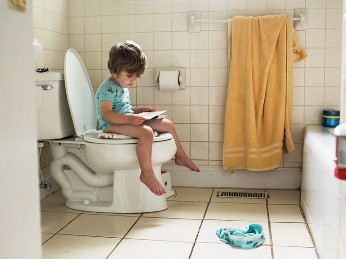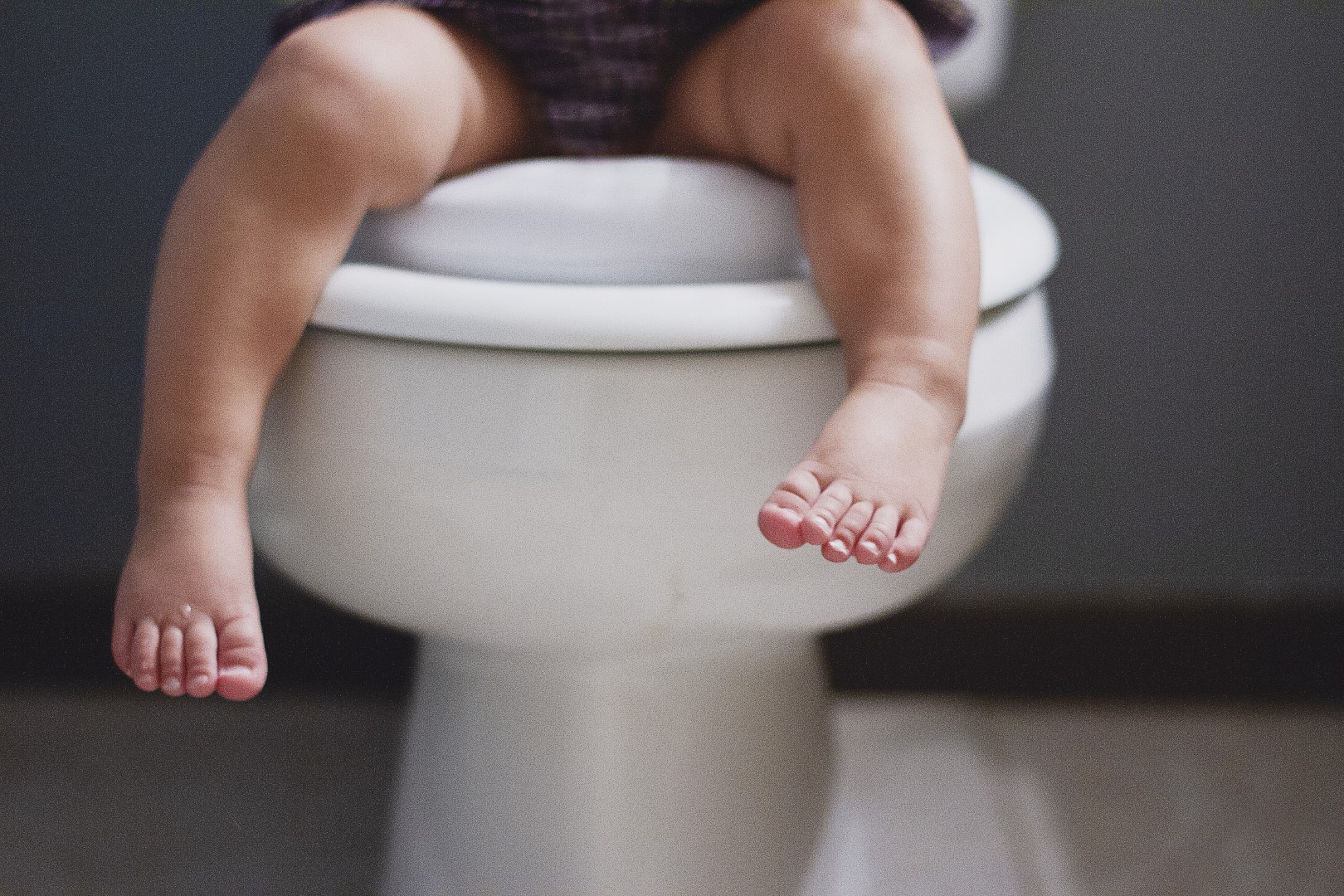As a teacher, one of the most common things I get asked about is “how come my child isn’t toilet trained yet?” The first thing that needs to be understood is that every child develops on a different timeline.
Most commonly, I see parents wanting their children around the age of two to learn how to go to the toilet. For some children, this is achievable without much of a fuss, and this is because they are physically and developmentally ready; but for others this can turn into a long struggle and ends up in a battle of wills as to when and where the child will use or not use the toilet.
This is such an important point that I feel like I need to say it again; there is no “right age” that your child will learn to use the toilet. Just because your friend’s child has started using the toilet and they are the same age as your child doesn’t mean that your child is ready. The “typical” child (if there is such a child) may successfully learn to use the toilet anywhere between the ages of two-five as the norm, and this is perfectly okay.

Toileting is an area that one never wants to build anxiety around. It is a natural learning process like rolling over and walking. Your child needs to master certain mini-milestones before they master independent toileting. Some of these include:
- Recognising that they have done a wee or poo
- Recognising when they are doing a wee or poo
- Recognising before they need to do a wee or poo
- Being able to hold on until they reach a toilet or nappy
- Being able to release their bladder and bowel
- Being able to talk and understand the words associated with the process
Let’s elaborate on these mini-milestones and see what learning they entail below:
From a physical development point of view, the child must be able to:
- Dress and undress themselves without assistance – using elastic pants helps with this. If they haven’t mastered taking their pants off, then their toilet learning already has a significant hurdle to overcome. By ensuring you are encouraging them to help out each time they get changed, you can help develop this learning. You can start to invite them to participate from when they are born. It may surprise you just how young children start to be involved, if you invite them and give them the chance.
- Be able to climb up onto the toilet with/without a step. This requires significant balance.
- Have the coordination and balance to sit on a toilet and hold themselves there for as long as they need to.
- Have the coordination and balance to reach and use toilet paper.
- To have developed bladder and bowel capacity and muscle control.

From a cognitive developmental point of view, the child must understand what their body tells them:
- They need to understand the feelings of their bladder or bowel telling them that they need to go – this requires their brain to have had the time to wire up correctly. They also need the ability to communicate that they are wanting to use the wharepaku (toilet).
- This also links in with them knowing their bodies and how to control the sensation/urge to go to the toilet until they can get to an appropriate place.
- Knowing that their waste needs to go (ideally) into a toilet rather than just a nappy. A nappy is not a hindrance on the toilet learning journey however – it’s an important step and one that is explained in more detail below.

From an emotional point of view:
- Children need to be ready to let go of a situation they are used to and comfortable with (urinating and releasing feces into a nappy whenever they feel like it). They also need to let go, literally, of these waste products, which they perceive as belonging to them.
Children deserve to learn to use the toilet naturally and easily, without stress, resentment or cajoling. It is an amazing achievement, and they deserve to be proud of themselves.
Using the respectful term “toilet learning” as opposed to “toilet training” reflects the great deal of learning that takes place as a child learns about their body, and how to pay attention to its cues. It also helps remind us adults that this is a process and our children will get there in their own individual time.
Toilet learning happens naturally and easily when we:
- Talk to children while we’re engaged in care moments such as nappy changes, inviting them to tune into what’s happening with their body and talking them through it, rather than getting them to tune out and distracting them with toys.
- After you notice that your child’s nappy is dry for an extended period, or that they are weeing more but less often.
- Explain to them what is happening in those care moments, ask them if you can help them change their nappy, encourage them to assist as and when they can.
- When they can stand confidently, start changing their nappy standing up.
- Get them as involved as possible in the process. Offer them a flannel or wipe so they can assist in cleaning themselves as soon as they show interest.
- Ask them before you even start to change their nappy if they have wee or poo in their nappy. Give them the time they need to think about it, connect the feeling of their nappy and respond before you take it off.
- Offer the toilet when you’re changing a nappy, but always be ready and okay to take “no” for an answer. I tend to always reply to a “no” with “perhaps next time”. No pressure on anyone, just a matter of fact offer for the toilet and acknowledgement that they don’t want to this time, but may the next.
- Once physically able, offer undies or nappies. If they would like nappies, simply agree and offer again next time.
- Don’t bother with sticker charts or other rewards for going to the toilet. Your child will learn at their own pace, and setting up a reward system that they won’t necessarily get is setting you both up for disappointment.
- Don’t be disappointed if they have an accident. Accidents will happen as part of learning, and if you create fear or uncertainty around toilet learning, they may start to hold on again until they have the security of a nappy.

If as a parent you start to get frustrated or angry at your child’s seeming lack of interest or ability to “toilet train”, it can become a battle of wills and this sends your child backwards. Let’s be honest, there is often a point where you are ready to stop changing nappies but your child may not be ready to use the toilet yet! Trust me, it will happen.

“If a child senses a parent’s anxiety about toilet learning, a power struggle may ensue. You, the parent, can’t win because there is no way to “make” your child use the toilet.”
Gerber, M. Your Self-Confident Baby. pp 225.
There are plenty of books insisting on being able to get children “Toilet Trained Within One Week” or how to achieve “Toilet Training in Less Than a Day“. I will simply refer back to Magda Gerber (creator of the RIE®️ philosophy) for comments on one of these how to books;
“This book is the product of our impatient society looking for instant results, forgetting the importance of every experience in the long process of learning.”
(Gerber, 2013).
As with a lot of other things you do as a parent, just try to relax and know that your child will get there when they’re ready and in the meantime they, as always, just need your love and support.
If in doubt, just ask for help!
Mā te wā
Sarah and the Elm Tree Team.

